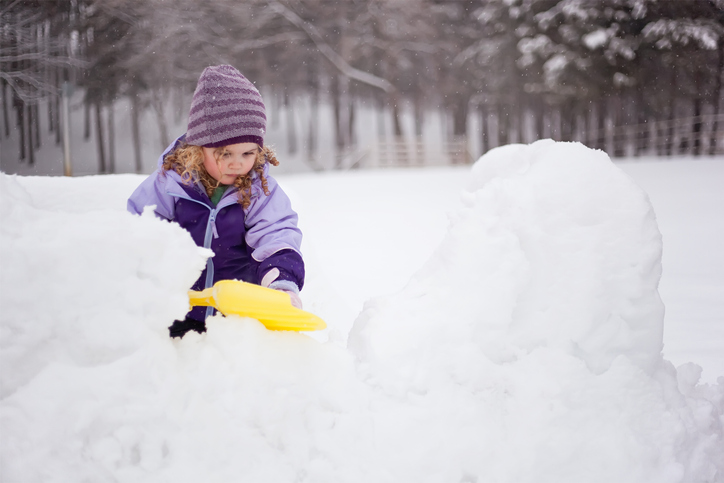Like sledding and having a snowball fight, building and playing inside a snow fort seems like a quintessential winter activity. I remember building them during my own childhood. Residing in an area prone to blizzards and lake effect snow, I spent many a snow day tunneling through the powdery goodness with friends and siblings.
We catapulted down frosty hills. We built snow forts in our yard. Besides the occasional bout of mild frostbite, I never suffered any injuries as a result of our snow play. Despite this, however, I won’t give my own kids permission to build snow forts and here’s why.
The dangers of snow forts are real.
Every year, children die as a result of collapsing snow forts. While it is possible to build structurally sound snow forts, accidents can still happen—particularly when you build a structure with a roof. Most structural failures occur as a result of too much snow on top of the fort. Even when you exercise care, however, the construction of snow forts is an inherently dangerous activity.
Some of these fatal accidents have hit close to home—as in just a town over from where I reside. Whereas many people are well-acquainted with the dangers of living in an earthquake or hurricane prone zone, other folks are familiar with the hazards of living in a heavy snow area. I am one of these people.
But aren’t many activities inherently dangerous?
Some might argue that building a snow fort is akin to going swimming. Sure, there are dangers in taking your kids to the pool, but most parents wouldn’t let the risk of drowning keep their children from participating in a fun, normal part of life.
Yes and no.
In my opinion, playing in the snow is the apt analogy here. Playing in the snow is the winter equivalent of going swimming in the summer. Sure, there are risks involved, but if you exercise caution and care, you can reduce your risk of falling victim to the elements.
On the other hand, building a fort is like diving into the deep end of the swimming pool without knowing how to swim. It’s paddling way out into the ocean past the buoys without a life guard on duty. It is increasing the risk that something will go wrong.
Swimming may pose risks but setting rules and exercising proper safety measures will reduce those risks. Similarly, playing outside in the snow poses risks, but settling rules and exercising proper safety measures can reduce those risks.
For my family, that means warning my kids of the dangers of building snow forts, asking them not to engage in the activity with friends, and suggesting alternative activities.
This is what works for me.
I understand that not everyone will agree with me on this—that’s fine. We are each allowed to parent as we see fit. To that end, however, I would also never fault a parent or child who has succumbed to one of these accidents. Accidents happen and they can be tragic.
I am aware that as my children grow, they will engage in activities without my knowledge and permission. Still, while I have a say in the matter, I will work to educate my kids on the dangers of certain seasonal activities and, like most aspects of parenting, hope they exercise caution and care when they are on their own.




